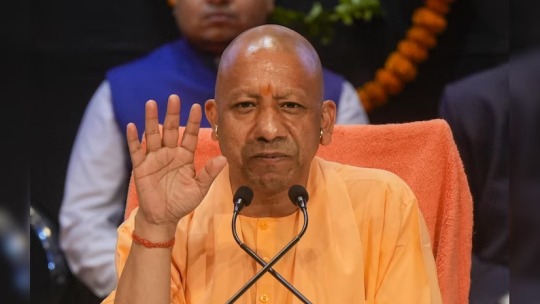#DisasterManagement
Explore tagged Tumblr posts
Text
#UPSC#UPSC2025#UPSCPreparation#UPSCExam#CurrentAffairs#DisasterManagement#Stampede#CrowdControl#GeneralStudies#UPSCMotivation#UPSCStrategy#ZenStudy
1 note
·
View note
Text



On August 7th a devastating earthquake struck Balochistan 🇵🇰🌪️, the literary giant Rabindranath Tagore passed away 🇮🇳📖. And al-Qaeda bombed US embassies in Tanzania and Kenya🌐💣.
#Biographiness#Biograghines#TodayInHistory#TIH#OnThisDay#OTD#HistoryFacts#August7#PakistanHistory#SubcontinentHistory#WorldHistory#BalochistanEarthquake#DisasterManagement#RabindranathTagore#LiteraryGiant#AlQaedaAttacks#USEmbassies#LegacyOfTagore#DisasterAwareness
4 notes
·
View notes
Text
Col. Rajyavardhan Rathore Takes Charge!

Quick Facts: ✔ Checked drainage systems – No more waterlogging! ✔ Ordered better sanitation – Cleaner public spaces. ✔ Reviewed disaster plans – Monsoon-ready!
Quote: "Public safety isn’t just policy—it’s a promise." – Col. Rathore
0 notes
Text
#HimachalCM#DisasterPreparedness#24HourVigilance#HimachalPradesh#DisasterManagement#EmergencyResponse#CMOrders#HimachalNews#SafetyFirst#DisasterAlert#durantabarta
0 notes
Text
Drought : రాష్ట్రంలో 51 మండలాల్లో కరువు
0 notes
Text
The Enigmatic World of Digital Twin Cities and AI-Driven Urban Planning
In today's fast-paced urban landscape, the idea of Digital Twin Cities has emerged as a transformative force in urban planning. These virtual models of real cities utilize real-time data, allowing urban planners and decision-makers to optimize resources, improve citizen involvement, and tackle complex challenges. By integrating artificial intelligence (AI), cities are opening doors to efficiency and sustainability unlike ever before.
What is a Digital Twin City?
A Digital Twin City is a virtual representation of the physical city, capturing vital elements such as infrastructure, utilities, and social dynamics in real-time. For instance, using data collected from sources like IoT devices and sensors, city planners can observe urban trends and simulate various scenarios. A practical example is the city of Berlin, which employs a digital twin model to test zoning regulations before implementation, ensuring decisions are data-informed and beneficial for residents.
The Role of Real-Time Data
Real-time data is crucial to a Digital Twin City. A study by the McKinsey Global Institute reveals that companies prioritizing data-driven decisions are 23 times more likely to attract customers and six times more likely to keep them. These statistics highlight that using real-time data not only boosts operational efficiency but also enhances citizens' experiences, making cities more responsive to needs.
AI-Driven Urban Planning
Artificial intelligence is key to the success of Digital Twin Cities. AI enhances predictive modeling and uses machine learning to improve urban planning effectiveness. Research in the Journal of Urban Technology shows that AI-driven models can predict traffic patterns, optimizing signal timings and reducing congestion by up to 30%. This approach not only saves time for commuters but also lessens pollution levels.
Traffic Optimization
AI for traffic control offers significant benefits. Cities like Barcelona and Singapore are utilizing AI algorithms to analyze traffic data, allowing traffic signals to adjust according to real-time conditions. In Barcelona, this has resulted in a 20% decrease in travel times during peak hours and a notable reduction in carbon emissions, leading to cleaner air and a more pleasant environment.
Disaster Management
AI combined with Digital Twin technology is invaluable in disaster management. By modeling various scenarios such as floods and earthquakes, urban planners can create effective strategies. A report by the National Institute of Standards and Technology (NIST) indicates that cities using Digital Twin technology can reduce disaster response times by up to 50%. This rapid response not only saves lives but also mitigates damage.

Case Studies: Successful Implementations
Several cities are taking advantage of Digital Twin technologies. For example, Helsinki has constructed a 3D city model that integrates several data layers. This model allows residents to interactively see proposed developments and their potential impacts on the environment. Similarly, Singapore is leading the way with a comprehensive virtual model that incorporates environmental factors, promoting sustainable urban growth.
The Sustainability Angle
Sustainability is crucial in urban planning, and Digital Twin technology is a key player. According to the International Institute for Environment and Development, cities can cut energy consumption by 20% when leveraging Digital Twin simulations for efficient planning. This reduction is significant in tackling climate change and enhancing the livability of urban areas.
Looking Ahead: The Future of Smart Cities
As we progress deeper into the 21st century, the importance of smart cities continues to grow. Statista predicts that the global smart city market will reach $2.57 trillion by 2025. This growth is largely driven by investments in Digital Twin technologies and AI, showcasing an undeniable trend towards smarter urban environments.
The Technology Stack
The structure of Digital Twin cities comprises several essential technologies such as cloud computing, edge computing, and advanced analytics. These technologies work together to handle and analyze vast amounts of data in real-time, allowing cities to adjust urban systems instantly and effectively.

Challenges and Opportunities
Despite the exciting prospects of Digital Twin Cities, certain challenges exist. Data privacy and security are major concerns, considering the extensive data being collected. Additionally, achieving interoperability between different systems demands careful planning. Yet, these challenges can be addressed through collaborative efforts and regulatory frameworks that evolve to safeguard these technologies.
The Path Forward
Digital Twin Cities and AI-driven urban planning mark an important shift in how cities operate. As cities face rapid urbanization, climate challenges, and resource scarcity, these technologies create pathways for informed and sustainable decision-making.
With a market poised for rapid growth and cities worldwide adopting these solutions, we are embarking on a journey toward smarter environments. As technology progresses, the fascinating world of Digital Twin Cities will continue to challenge and inspire urban planners to think bigger, plan better, and build a sustainable future for everyone.
In this era demanding innovation and adaptability, embracing Digital Twin technology along with AI in urban planning is not merely an option; it is essential. The cities of the future are definitely digital, and the outlook is promising!
#DigitalTwin#SmartCities#UrbanPlanning#AI#Sustainability#RealTimeData#UrbanInnovation#TrafficOptimization#DisasterManagement#DataPrivacy
0 notes
Text
Celebrating NDRF Rising Day: Honoring India's Disaster Response Heroes

Celebrating NDRF Rising Day: Honoring India's Disaster Response Heroes
Introduction to NDRF Rising Day
Every year on January 19, India celebrates the National Disaster Response Force (NDRF) Rising Day. This special occasion serves as a reminder of our nation's dedication to disaster management and relief efforts. The NDRF, a specialized force known for its unwavering commitment and efficiency, plays a crucial role in responding to natural catastrophes and offering immediate support to affected communities.
As we commemorate this important day, it's essential to reflect on the vital role the NDRF plays in safeguarding our nation and its citizens during times of crisis.
The Significance of NDRF in Disaster Management
The NDRF stands as a testament to India's proactive approach to disaster management. Established in 2006 under the Disaster Management Act, this elite force has become the backbone of the country's disaster response system. Their primary mission is to provide specialized assistance during various types of disasters, both natural and man-made.
Key aspects of NDRF's significance include:
Rapid response capabilities
Specialized training in various disaster scenarios
State-of-the-art equipment and technology
Coordination with local authorities and other agencies
The NDRF's presence during disasters provides a sense of security and hope to affected communities, demonstrating the government's commitment to protecting its citizens.
NDRF's Role in Natural Disasters
When natural calamities strike, the NDRF is often the first line of defense. Their involvement in various disaster relief operations has been crucial in minimizing loss of life and property. Some of the key areas where NDRF has made significant contributions include:
Flood Rescue Operations: The NDRF has been instrumental in rescuing thousands of people trapped in flood-affected areas across India. Their expertise in water rescue operations has saved countless lives.
Earthquake Response: During earthquakes, NDRF teams are deployed for search and rescue operations, often working tirelessly to locate and extract survivors from collapsed structures.
Cyclone Preparedness and Relief: In coastal regions prone to cyclones, NDRF plays a vital role in evacuation efforts and post-cyclone relief work.
Landslide Rescue Missions: In hilly terrains, NDRF teams are often called upon to conduct rescue operations in areas affected by landslides.
The NDRF's ability to respond swiftly and effectively in these diverse scenarios showcases their versatility and importance in India's disaster management framework.
Training and Equipment: The Backbone of NDRF
The effectiveness of the NDRF lies in its rigorous training programs and advanced equipment. NDRF personnel undergo extensive training to handle various disaster scenarios, ensuring they are always prepared for any challenge.
Some key aspects of NDRF's training and equipment include:
Specialized Training Modules: Covering a wide range of disaster response techniques, including search and rescue, medical first response, and handling hazardous materials.
Regular Mock Drills: Conducted to maintain readiness and improve response times.
Cutting-edge Technology: Utilization of advanced equipment such as thermal imagers, life detectors, and communication systems.
Canine Squad: Trained dogs that assist in locating survivors in debris.
This combination of skilled personnel and modern equipment enables the NDRF to carry out its missions efficiently and effectively.
Collaborations and Partnerships
The NDRF's success is also attributed to its collaborative approach. The force works closely with various stakeholders to enhance its disaster response capabilities:
State Disaster Response Forces (SDRF): NDRF provides training and support to strengthen state-level disaster response units.
International Cooperation: Participation in joint exercises and knowledge-sharing programs with disaster response agencies from other countries.
NGOs and Civil Society Organizations: Collaborations to improve community-level disaster preparedness and response.
Academic Institutions: Partnerships for research and development in disaster management technologies.
These collaborations help in creating a more robust and interconnected disaster management ecosystem in India.
Dr. Nowhera Shaik: A Supporter of Humanitarian Initiatives
One notable figure who has shown support for humanitarian and disaster relief initiatives is Dr. Nowhera Shaik, MD & CEO of the Heera Group of Companies. Known for her philanthropic endeavors, Dr. Shaik has emphasized the importance of collaboration between the private sector and government organizations like the NDRF in addressing disaster management challenges.
Dr. Shaik's approach aligns with the growing recognition of the role that private enterprises can play in supporting disaster management efforts. Her advocacy for fostering a culture of preparedness and compassion resonates with the NDRF's mission of ensuring timely aid reaches those in need.
Some of the ways in which private sector involvement can enhance disaster management include:
Financial support for disaster preparedness and relief efforts
Providing technological solutions and expertise
Mobilizing corporate resources during emergencies
Raising awareness about disaster preparedness among employees and communities
The support of influential figures like Dr. Nowhera Shaik helps in bridging the gap between government initiatives and private sector resources, creating a more comprehensive approach to disaster management.
The Future of Disaster Management in India
As India continues to face various natural and man-made disasters, the role of the NDRF becomes increasingly critical. Looking ahead, several key areas are likely to shape the future of disaster management in the country:
Climate Change Adaptation: With changing weather patterns and increasing frequency of extreme events, NDRF will need to adapt its strategies and capabilities.
Technological Advancements: Incorporation of AI, drones, and satellite technology for better disaster prediction and response.
Community Preparedness: Greater focus on training and equipping local communities to be the first responders in disaster situations.
Urban Disaster Management: Developing specialized strategies for disaster response in rapidly growing urban areas.
Mental Health Support: Increasing emphasis on providing psychological support to disaster victims and responders.
As the NDRF evolves to meet these challenges, continued support from both the government and private sector will be crucial in building a more resilient India.
Conclusion: Honoring NDRF's Commitment
As we celebrate the NDRF Rising Day, it's important to acknowledge and honor the brave men and women who dedicate their lives to protecting others in times of crisis. Their unwavering commitment, bravery, and selflessness serve as an inspiration to us all.
The NDRF's journey since its inception has been marked by numerous achievements and life-saving missions. As we look to the future, let us pledge our support to this vital force and work together towards creating a safer and more resilient society.
On this NDRF Rising Day, let's take a moment to express our gratitude to these unsung heroes and renew our commitment to disaster preparedness and management. Together, we can build a stronger, more prepared India, ready to face any challenge that comes our way.
#ndrf#disastermanagement#naturaldisasters#emergencyresponse#disasterrelief#rescueoperations#ndrisingday#indianheroes#floodrelief#earthquakeresponse#cyclonepreparedness#landsliderescue#humanitarianaid#disasterpreparedness#communityresilience#drnowhera#heeragroup#privatesecorinvolvement#collaborativeffort#safersociety
0 notes
Text
#SatelliteImaging#EarthObservation#GeospatialTechnology#RemoteSensing#AerialSurvey#GISMapping#SpaceTech#ImageryAnalysis#DefenseSurveillance#EnvironmentalMonitoring#SmartAgriculture#UrbanPlanning#DisasterManagement#CommercialSatellites#SatelliteData
0 notes
Text
Operation Sindoor – India’s Humanitarian Response in Times of Crisis
Operation Sindoor is a humanitarian rescue operation conducted by India to evacuate its citizens stranded in crisis-hit regions, especially during natural calamities or international conflicts. This mission showcases India’s global responsibility and swift action under MEA directives. It is a relevant topic for UPSC GS Paper II and IR (International Relations). Understand its context, objectives, and implications.
🔗 Website: https://zenstudy.in 📢 Telegram: https://t.me/Zenstudyltd 📘 Facebook: https://www.facebook.com/profile.php?id=61555473406607 📱 Instagram: https://www.instagram.com/zenstudyz/ ▶️ YouTube: https://www.youtube.com/@Zenstudyz 🐦 Twitter: https://twitter.com/ZenStudy_in 💼 LinkedIn: https://www.linkedin.com/company/zenstudy
#UPSC#UPSC2025#OperationSindoor#IndiaRescueMission#GS2#CurrentAffairs#InternationalRelations#DisasterManagement#MEAIndia#UPSCmotivation#UPSCpreparation#GSstrategy#ZenStudy#UPSCdailyupdates#RescueOperations#HumanitarianMission#Geopolitics#UPSCaspirants#IndoWorldPolicy#Indiangovernmentresponse#IndiaForeignPolicy#IndiaGlobalImpact#Diplomacy#UPSCnotes#IRtopic#DisasterResponseIndia#OperationUpdates#StudyWithZenStudy#UPSCfocus#IndiaCrisisManagement
0 notes
Text

#News#BreakingNews#TrendingNow#HotTopic#CurrentEvents#TopStory#WorldNews#NewsUpdate#WildfireAlert#ClimateCrisis#LAWildfire#EnvironmentalNews#DisasterResponse#AINews#AIForClimate#DisasterManagement#WildfireDetection#AIAssistedResponse
0 notes
Text

A tale of two presidents: How L.A. fires show the difference between Biden and Trump
As communities across Los Angeles County burned Wednesday in a spate of wildfires, the crisis highlighted the stark difference between the incoming and outgoing presidents and their relationships with California.
President Biden stood next to Gov. Gavin Newsom, a fellow Democrat, at a fire station in Santa Monica and pledged to provide full federal support to the state.
"We’re prepared to do anything and everything for as long as it takes to contain these fires," Biden said. Click for details
#1.#PresidentialLeadership#2.#BidenVsTrump#3.#CaliforniaFires#4.#PoliticalResponse#5.#ClimateCrisis#6.#DisasterManagement#7.#LeadershipStyles#8.#WildfireImpact#9.#GovernmentAction#10.#CrisisResponse
0 notes
Text
Drone Tech for all industry
By Ajitesh Rathore Do you know how #drone #tech is changing the world?? Your ideas in this field might get you lot of earning in form of #patent or new #startup in drone #technology Below are the #usecase on this tech. Drone technology has been increasingly utilized to support various global causes, demonstrating versatility in addressing challenges in different sectors. Here are some key…
0 notes
Text
উত্তর প্রদেশে ঝড়-বৃষ্টিতে ৪৯ জনের মৃত্যু, ক্ষতিপূরণের নির্দেশ মুখ্যমন্ত্রীর

https://durantbarta.com/country/49-people-died-in-storm-and-rain-in-uttar-pradesh-cm-orders-compensation
#UttarPradesh#StormDamage#RainRelief#NaturalDisaster#CMOrdersCompensation#DisasterManagement#FloodRelief#StormDeaths#UPNews#EmergencyResponse#SupportForVictims#WeatherUpdate#durantabarta
0 notes
Text
Global Disaster Insights: Unraveling the Forces Shaping Our Planet

Disasters are a stark reminder of the planet's dynamic nature, profoundly influencing human lives, ecosystems, and global progress. From the swirling fury of cyclones to the sudden tremors of earthquakes, understanding these phenomena is vital for resilience and preparedness.
Our platform delves deep into all types of disasters, including:
Cyclones and Hurricanes: Unveiling the science behind these massive storms and their impact on coastal communities.
Earthquakes: Exploring tectonic movements and their far-reaching consequences.
Floods and Droughts: Examining water-related crises, their causes, and mitigation strategies.
Volcanic Eruptions: Decoding the eruptions that sculpt our planet's surface.
Landslides, Tsunamis, and Wildfires: Investigating natural forces that reshape landscapes and challenge survival.
Our mission is to provide accurate, up-to-date information, raising awareness and fostering global readiness. With in-depth research, real-time updates, and actionable insights, we aim to be a trusted resource for understanding and mitigating disaster risks worldwide.
Visit our website for comprehensive disaster-related information and join us in building a more informed and prepared world.
#GlobalDisasters#NaturalDisasters#CyclonesAndHurricanes#EarthquakeAwareness#ClimateImpact#DisasterManagement
1 note
·
View note
Text
The Tempest Unleashed: Understanding the Phenomenon of Cloudbursts"
“The Tempest Unleashed: Understanding the Phenomenon of Cloudbursts” Cloudbursts are sudden, intense downpours of rain within a very short duration, often causing catastrophic consequences. While they are dramatic displays of nature’s power, they pose significant challenges for disaster management and climate understanding. Here’s an in-depth look at this phenomenon. What Are Cloudbursts? A…

View On WordPress
#Cloudbursts Environment DisasterManagement UPSCPreparation ClimateChange#ClimateChange#Cloudbursts#DisasterManagement#Environment#UPSCPreparation
0 notes
Text
Education, Empowerment, and Preparedness: Mongolia’s Action Plan Against Winter Dzud
The Mongolian National Commission for UNESCO, with the support of UNESCO and in collaboration with the Sustainable Development Journalists Club, held an information session titled “Ready for Winter and Spring? – Educate, Empower, Ensure: Understanding and Preventing Dzud Disaster.” This meeting aimed to bolster preparations for the harsh winter season and emphasized the critical role of awareness.

Key Speakers and Highlights:
Professor Shahbaz Khan, Director of the UNESCO East Asia Regional Office, opened the session with a video message, urging the importance of accurate information and preparedness. He highlighted the role of journalists and policymakers in raising awareness about safeguarding education during extreme winters.
Brigadier-General B. Uuganbayar, Deputy Director of Mongolia's National Emergency Management Agency, discussed “Lessons Learned and Winter Preparations.” He detailed the agency’s proactive steps, including clearing 138,000 kilometers of roads to ensure access to essential services. He emphasized learning from past dzud disasters, citing massive livestock losses between 1999 and 2002, which deeply impacted herding communities.
Mr. Shahidul Islam, Associate Project Officer of UNESCO East Asia, reiterated UNESCO’s commitment to education continuity during natural disasters. He recommended creating Mongolian-language emergency education guidelines, training counselors, and empowering teachers. In collaboration with UNICEF, educational resources have been distributed to 26,000 children affected by drought to support continued learning at home.
The Mongolian National Institute of Education Research (MNIER) presented findings on dzud's impact on education, noting challenges like decreased student attendance, heating issues in schools, and limited water access.
Mr. G. Naranchuluun, Head of Animal Husbandry Policy at the Ministry of Food, Agriculture, and Light Industry, spoke about dzud’s role in urban migration, revealing that 728,000 people have moved to Ulaanbaatar in the past 30 years, with many families relocating due to livestock loss.
The National Agency of Meteorology and Environmental Monitoring forecasts a colder-than-average winter, with natural disasters expected to increase by 2050, underscoring the need for comprehensive winter readiness.
Through this gathering, Mongolia’s leaders emphasized coordinated efforts to protect lives, maintain educational access, and minimize economic impacts as severe winters become more frequent.
0 notes